LECTURE #22: IMMUNOLOGY
I. Types of defensive responses
Immunology is the study of _________________________________
to ____________________________ ________________________
(e.g. bacteria, viruses and non-self proteins).
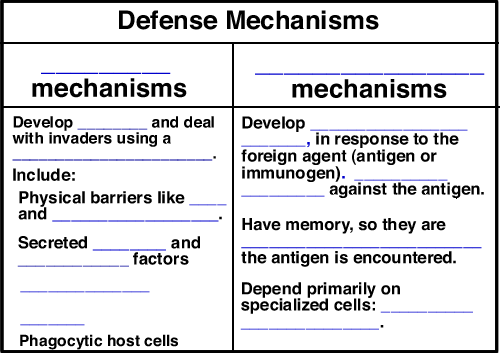
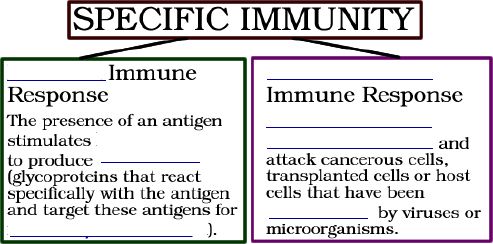
II. Antibodies and antigens
A. Antibodies (Ab) are _______________________
(have two equally specific binding sites for the same antigen); _______________________________
with the following structure:
B. Antigens (Ag) are __________________________.
Each antigen has many _______________
(antigen _________________________
that generally consist of 5-10 amino acid or sugar residues).
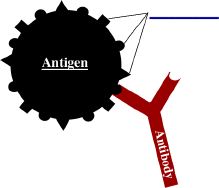
http://www.hbcollege.com/lifesci/aal2e/student/resources/bioimg/60.htm
demonstrates interaction between Ab and Ag.
III. Antigens and antibodies interact with one another in detectable
ways. ______________________ is
the science of ______________________________________________
these antigen-antibody reactions.
A. Two types of antigen/antibody reactions:
1. Because antibodies are bivalent, they can react with two antigen
molecules or cells of the same type. This allows them to ______________________________________________________
_________________________________________________
of alternating Ag-Ab-Ag-Ab etc...
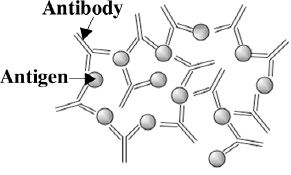
2. Eventually this antigen-antibody lattice network becomes so
large that it _________________ ________________________.
If the antigen is a _______________________
antigen, such as a protein or a carbohydrate, this reaction is called
a ________________________.
If, instead, the antigen is ________________________,
such as a red blood cell or bacteria the reaction is called an __________________________.
B. Two kinds of experiments to demonstrate the two types of antigen/antibody
interactions.
1. Agglutination (_____________________________)
- blood typing for ABO and Rh factor.
a. ABO blood typing
Mix a drop of blood with Antibody-A, Antibody-B and Antibody-Rh
factor in separate wells. Hemagglutination in the wells indicates
that the _____________ ________________________________________________________________.
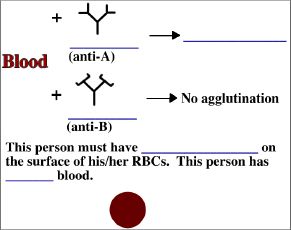 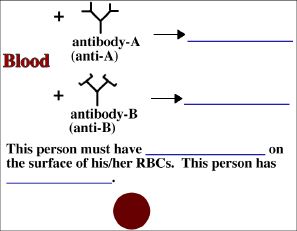
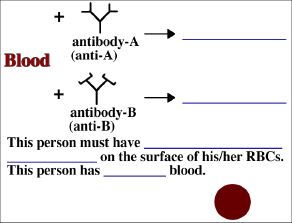 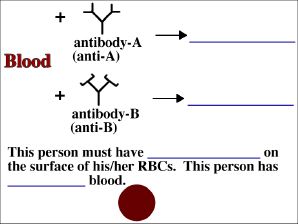
*In vivo, people produce antibodies to surface glycoproteins which they
see as foreign.
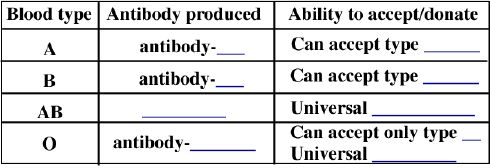
b. Rh factor:
1.) Based on the presence or absence of the RhD antigen on
RBCs. An individual who has a blood type of A and is RhD+ is
said to have _______
blood.
2.) RhD- people must be _____________________________
to the RhD antigen before their body will start making antibodies.
3.) The Rh factor is important to an Rh-woman who is carrying
a child of an Rh+ man. ____________________________________________________.
The woman can produce antibodies to the Rh factor and then during
subsequent pregnancies the woman’s immune system treats
the presence of the Rh factor as an infection and effectively
neutralizes it resulting in abortion. This is called “hemolytic
disease of the newborn” or ________________.
To prevent this, there is a therapy available called ______________.
This therapy effectively gives the mother bunches of antibodies
after the first pregnancy to ________________________________________________________.
2. Precipitation
Observing the interaction between a protein antigen (Bovine serum
albumin (BSA)) and anti-BSA antiserum —__________________________________________________________.
a. This test will be done on an agar gel to immobilize the precipitates
so they are more easily observed.
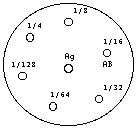
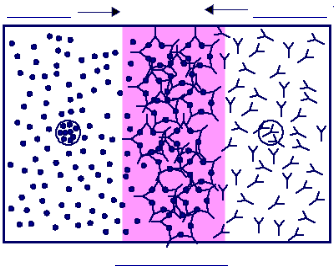
b. Using this test, we can determine _________________________________________
and still give a positive precipitation band. (e.g. if the last
positive precipitation band is seen for the 1/8 dilution than
the antibody can be diluted 8 fold and still give a positive precipitation
reaction. In immunology this dilution factor is often referred
to as the _____________________
even though it is just a unitless factor.)
FYI: Ouchterlony gel precipitations have been used in the understanding
of how ___________________________________
interact with the immune system—women make antibodies to
them.
IV. Wright stained blood smears
A. Never Let Monkeys Eat Bananas (white blood cells).
1. What? This is a mnemonic designed to allow
you to remember the names of WBC’s in order of decreasing abundance.
a. Never : ________________________
are the most abundant type of WBC in our serum. They function
mainly in the innate immune response in a _________________________
manner. They are classified as ___________________________,
which means their cytoplasm is filled with granules (or lysosomes).
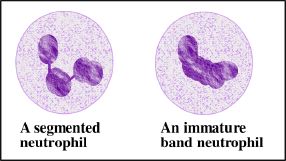
b. Let: _____________________________
are agranulocytes (free of granules) that function in the ____________________________
(cell-mediated and humoral).
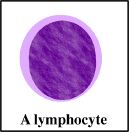
c. Monkeys: _________________________
are eventually phagocytic when they mature into _______________________________.
They are predominately involved in the innate immune response
and are classified as agranulocytes.
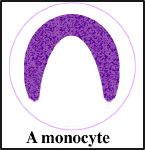
d. Eat: _______________________
are hardly present in our blood and function during ____________________________
in a phagocytic manner. They are classified as granulocytes.
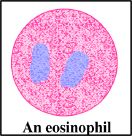
e. Bananas: ________________________
are very few and far between and they also function during
allergic reactions to release heparin & histamine. These
cells work in concert with eosinophils. They are classified
as granulocytes.
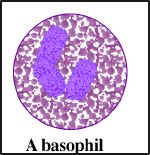
B. Red Blood Cells
1. These are the largest population of blood cells and function
to transport oxygen and carbon dioxide. They are a _______________________________
shape which increases the surface area to volume ratio for effective
________________________________.
http://whyfiles.org/090doping_sport/images/redblood.jpg
|
















